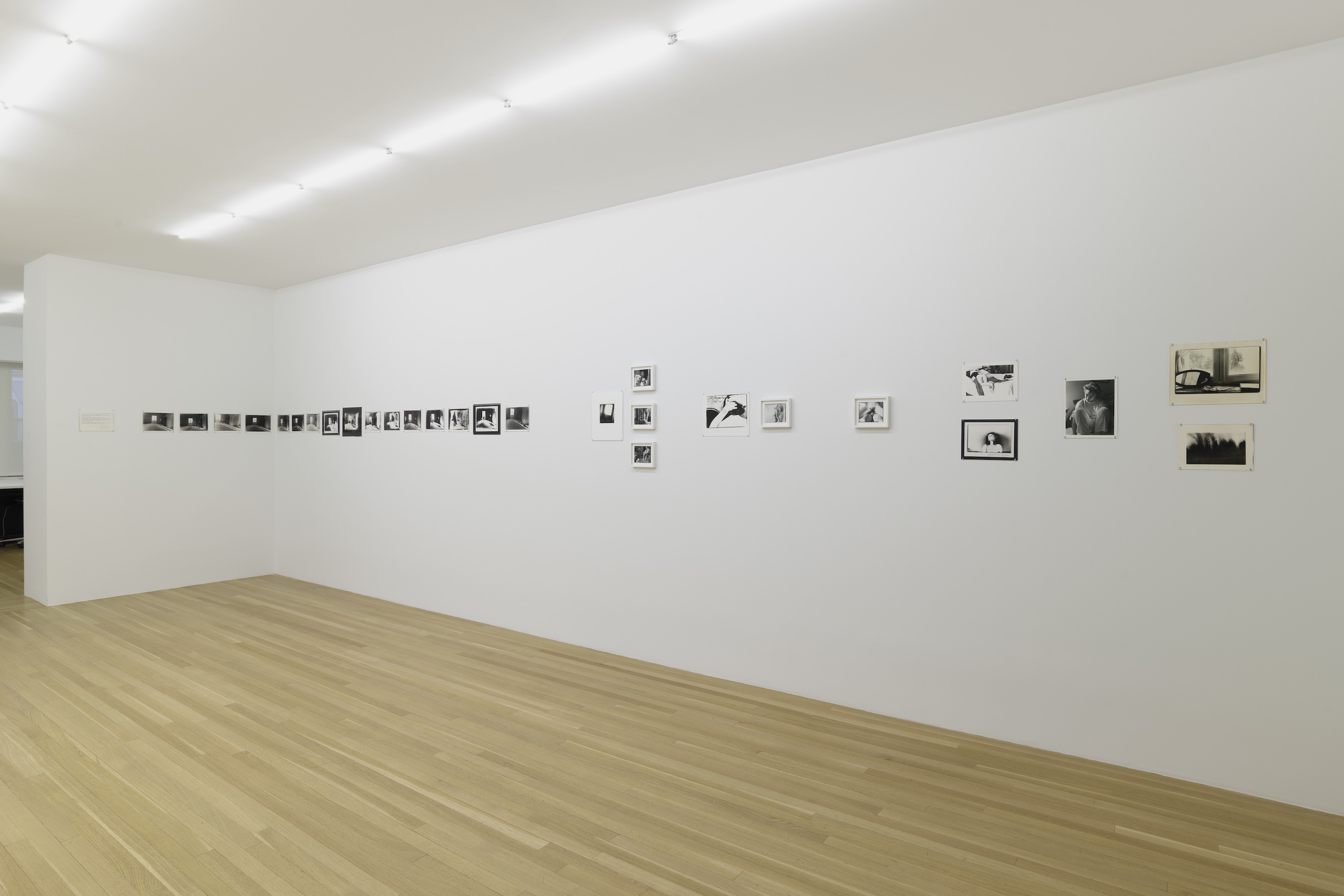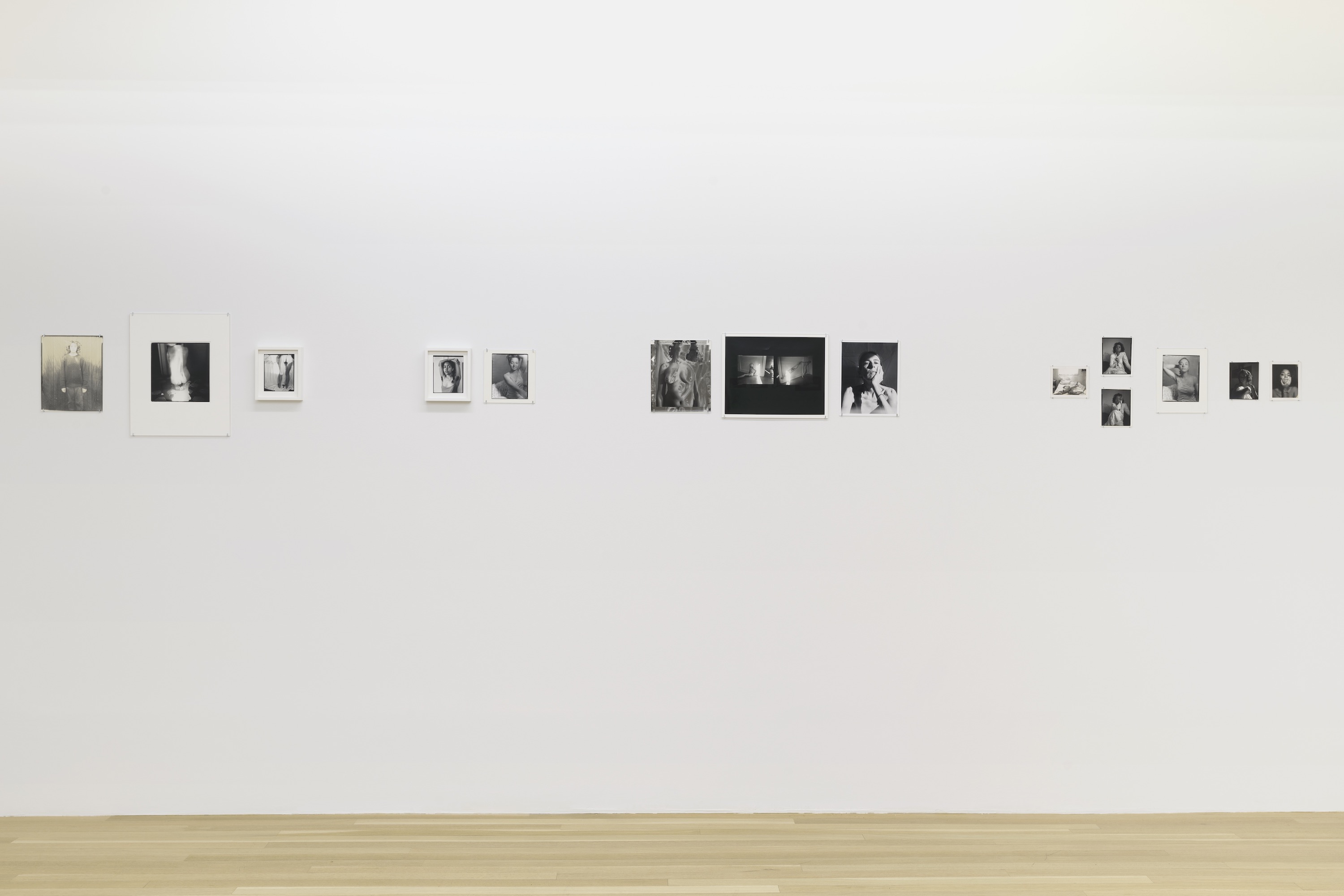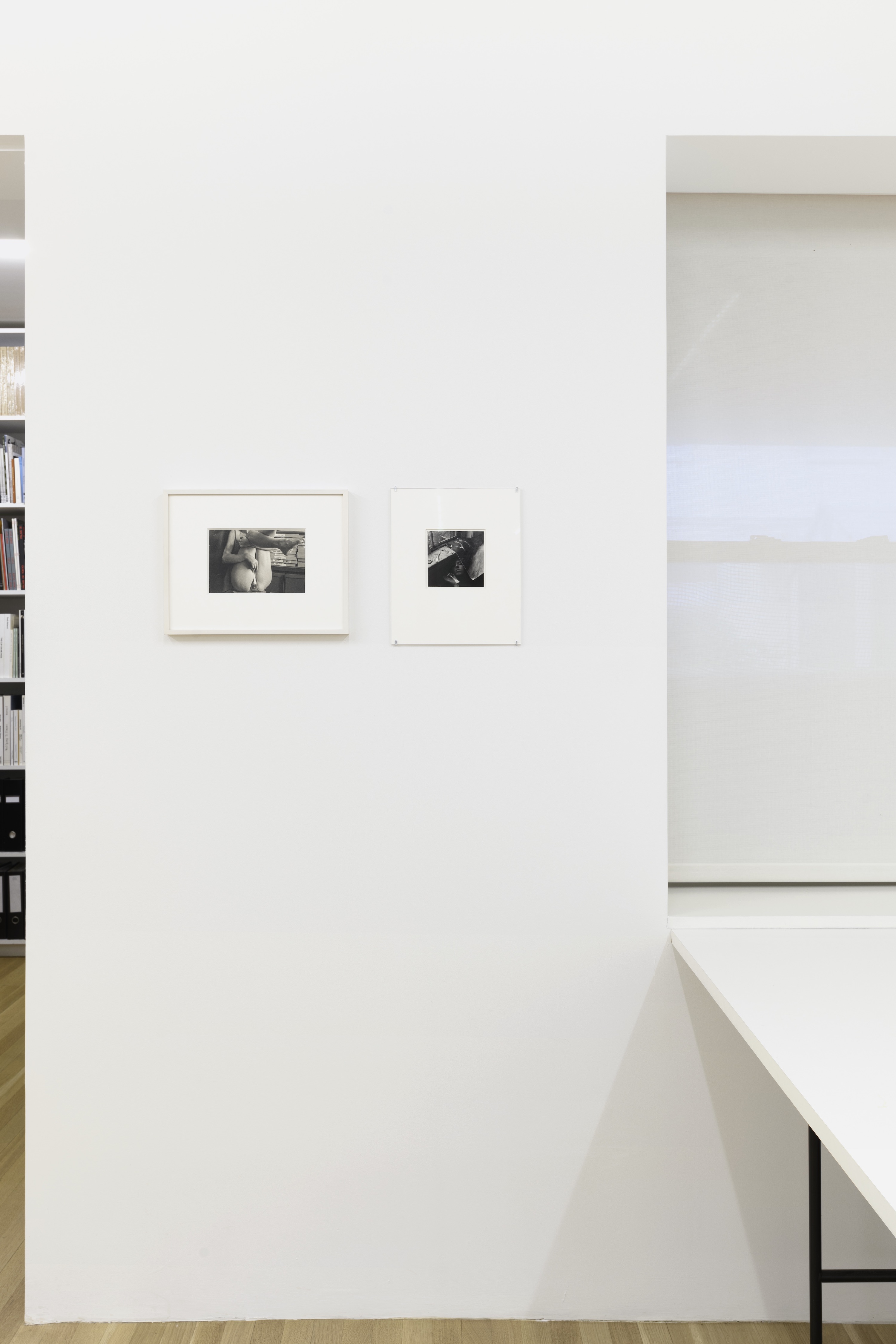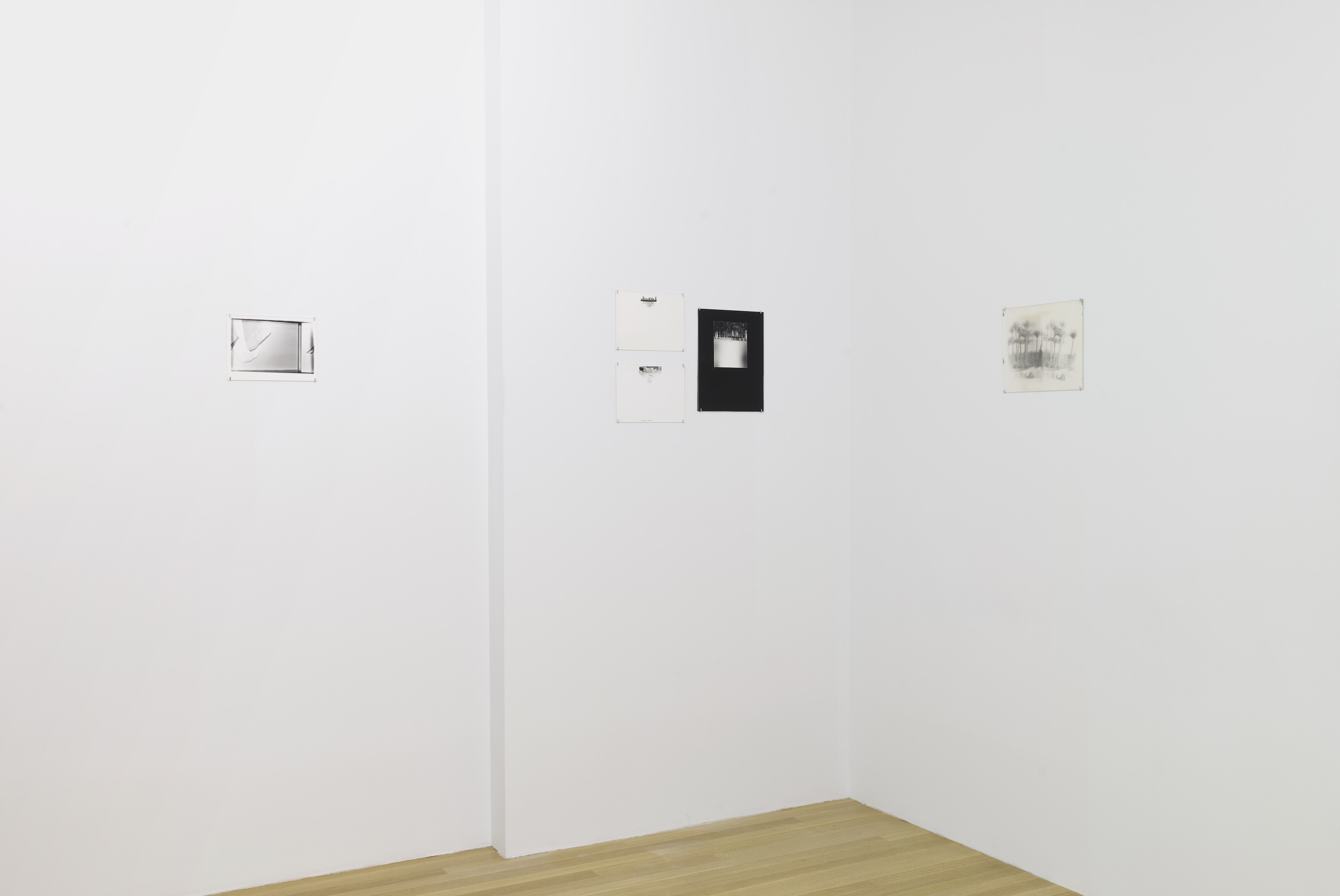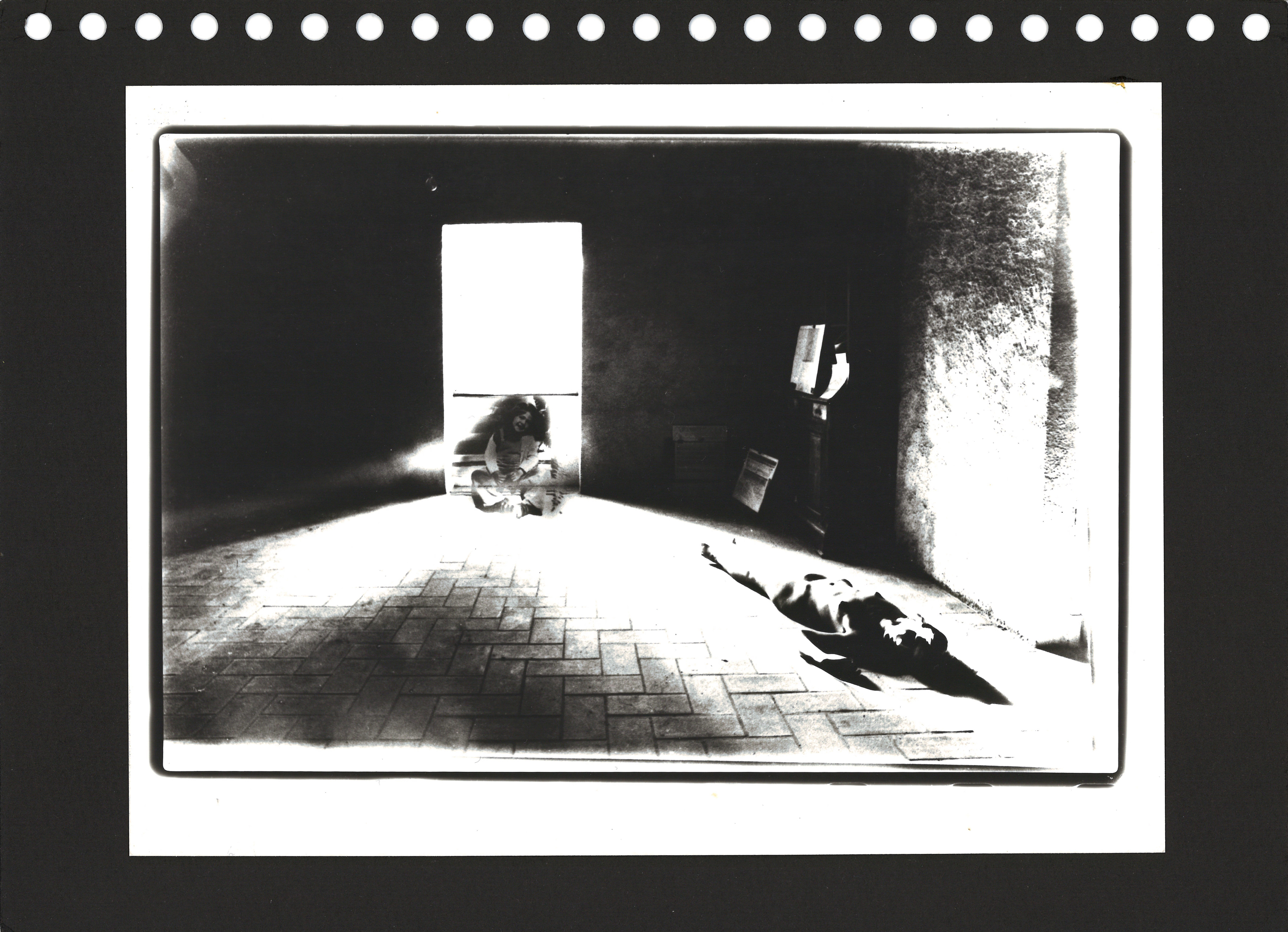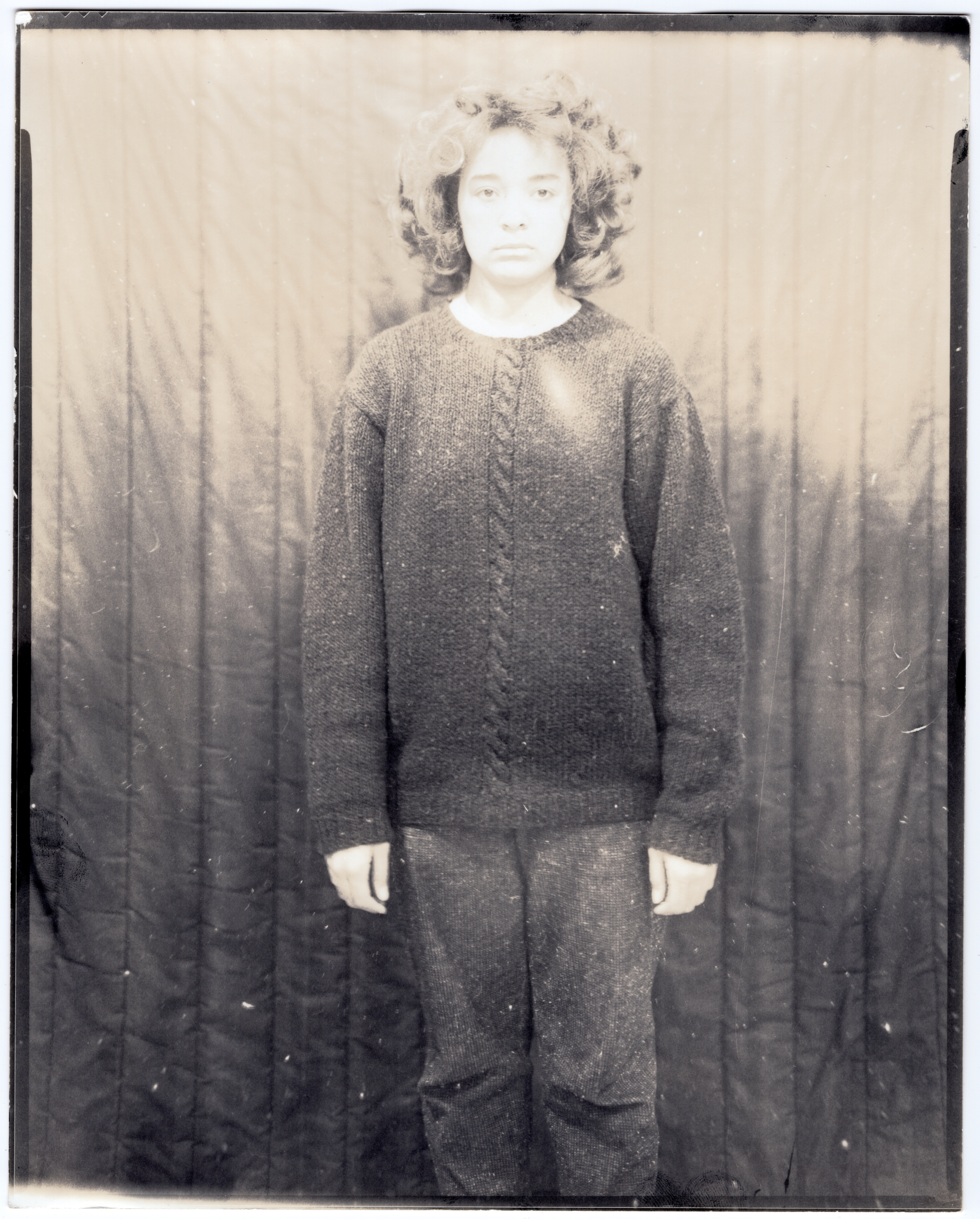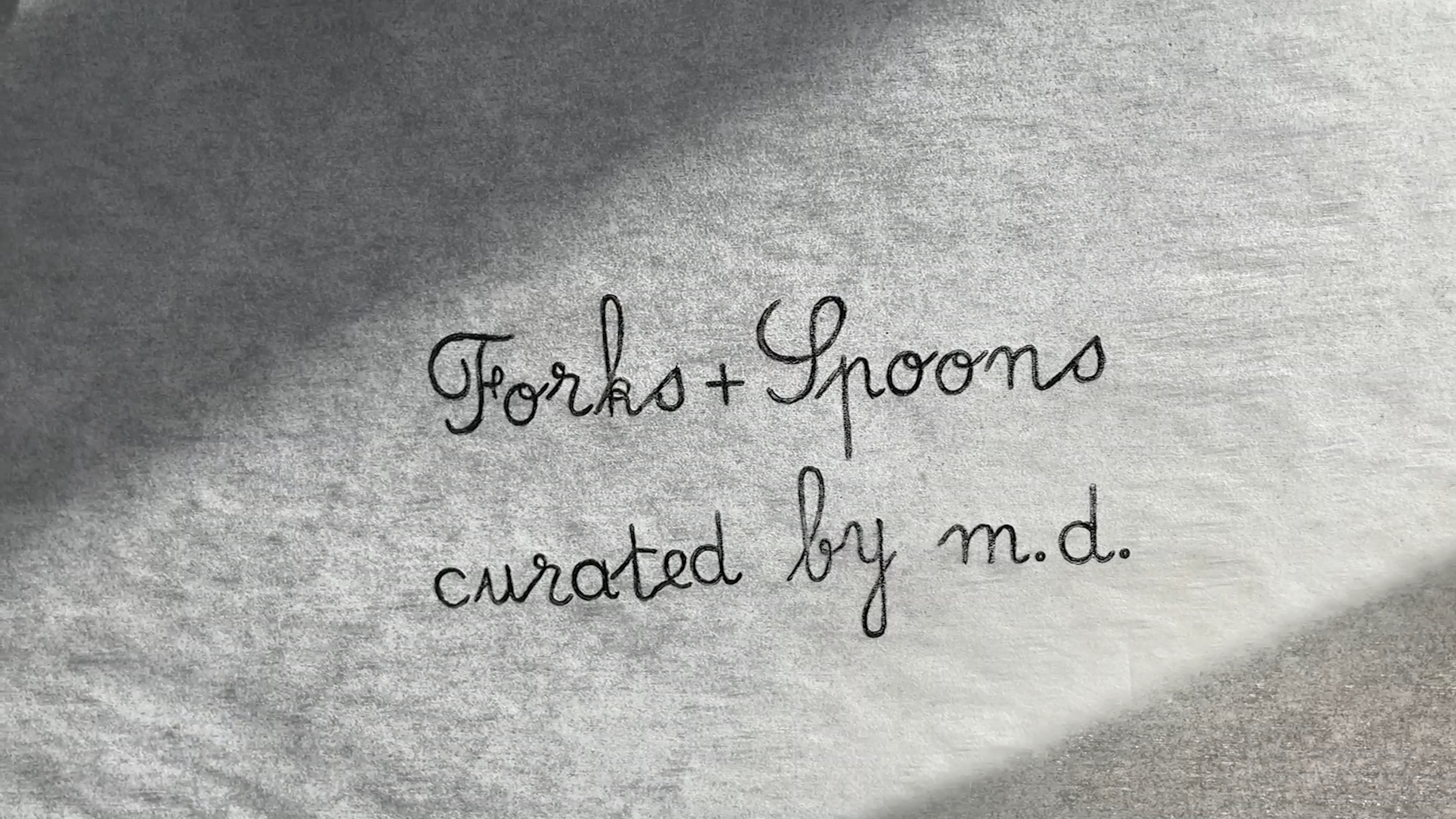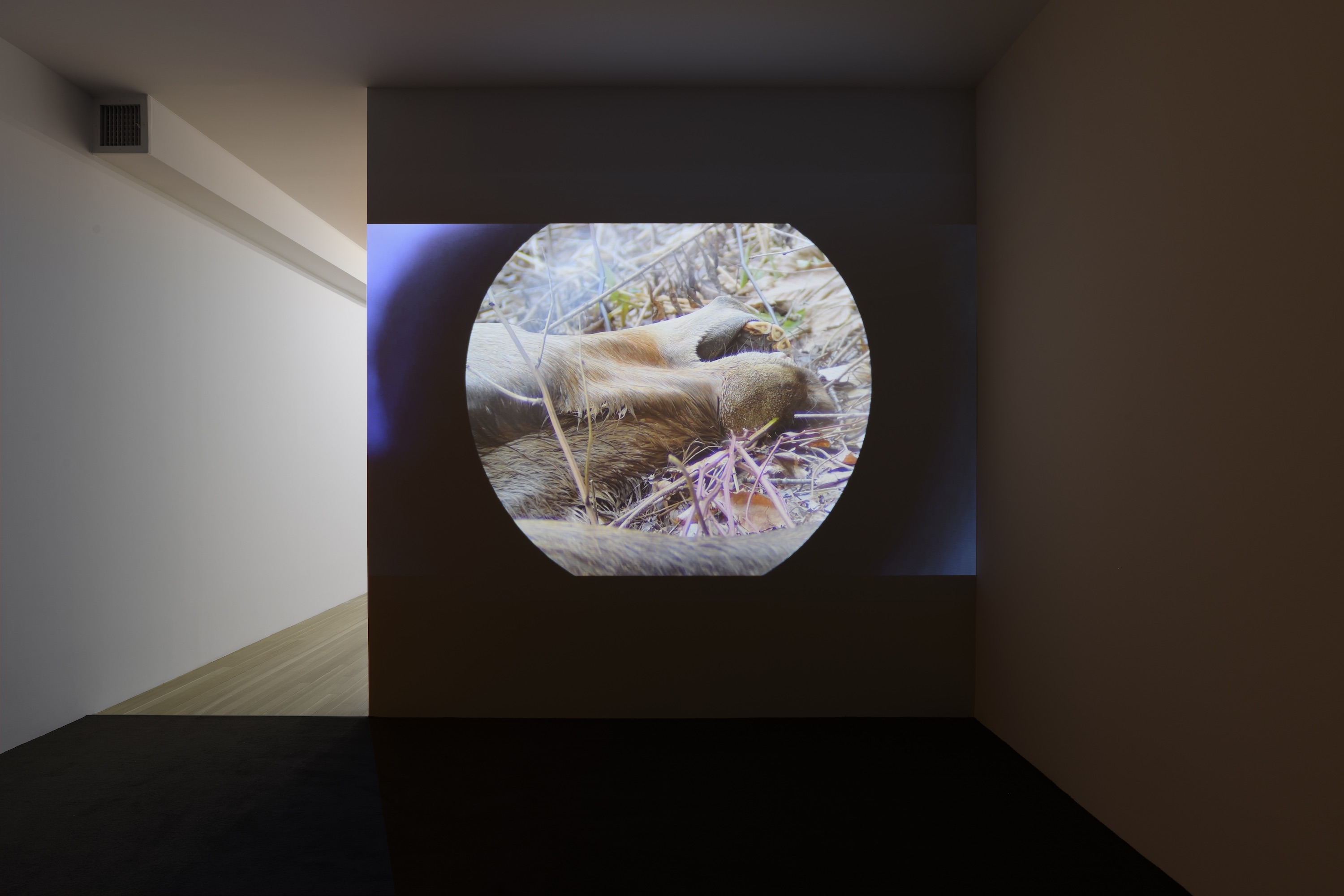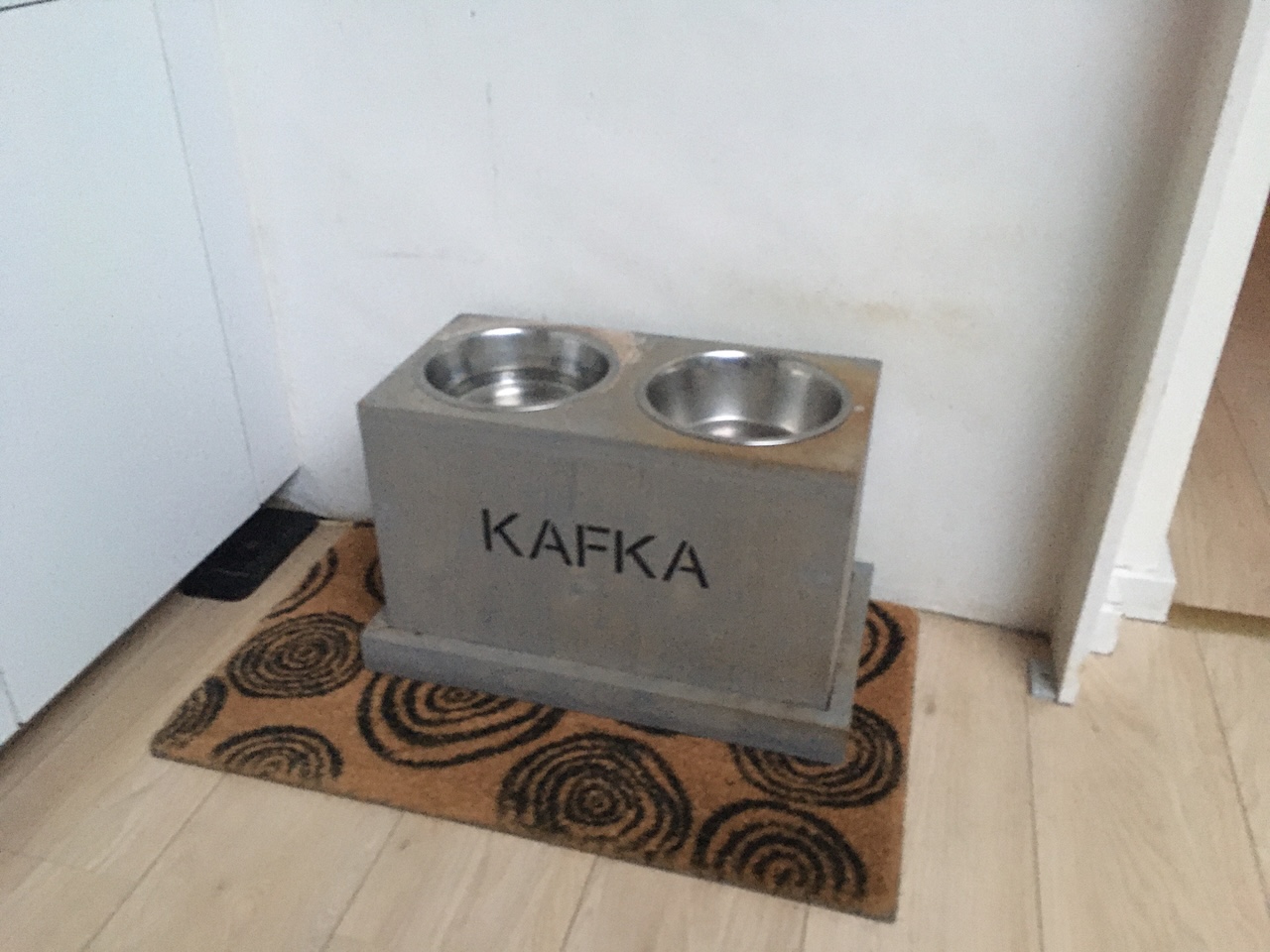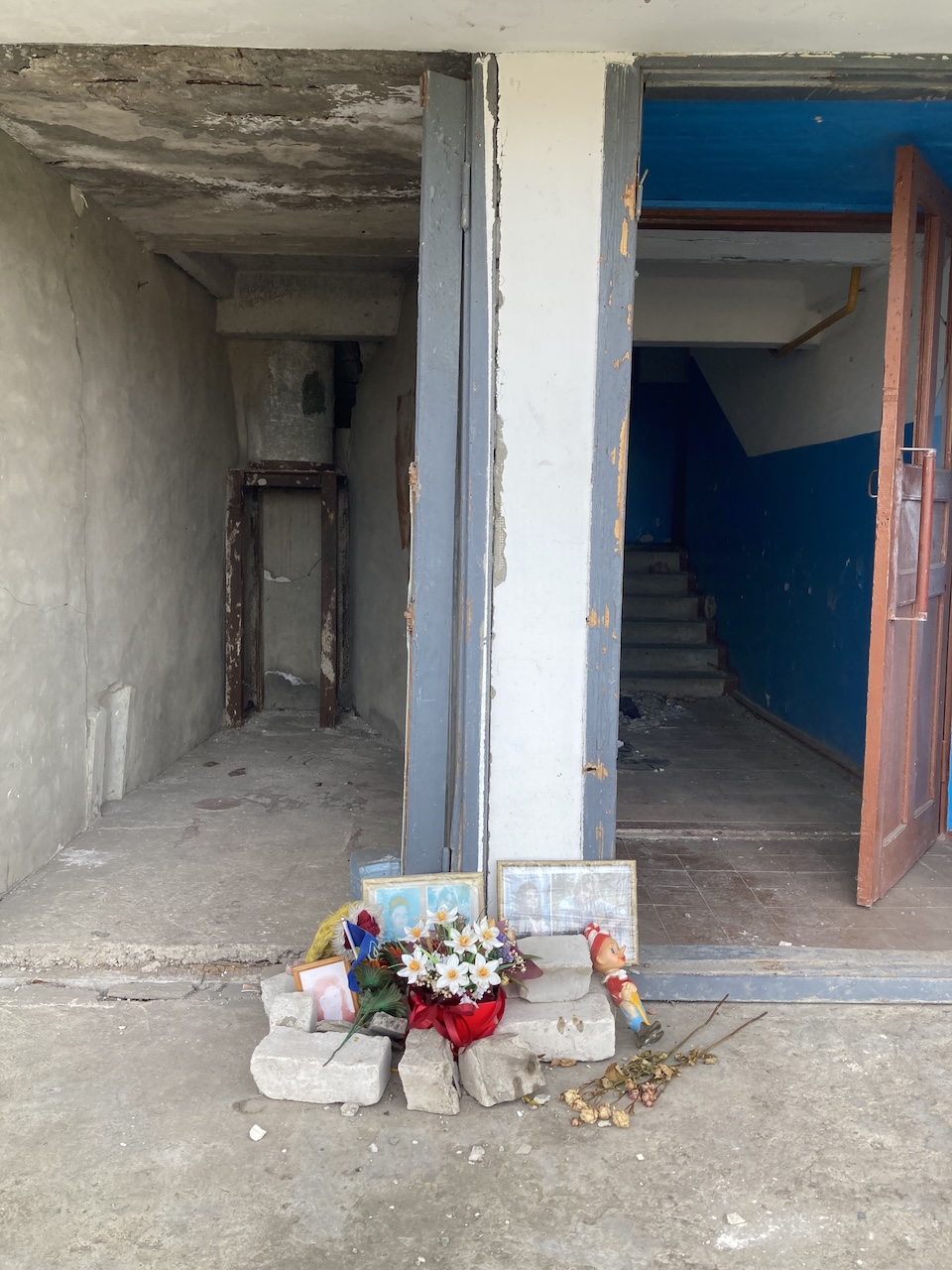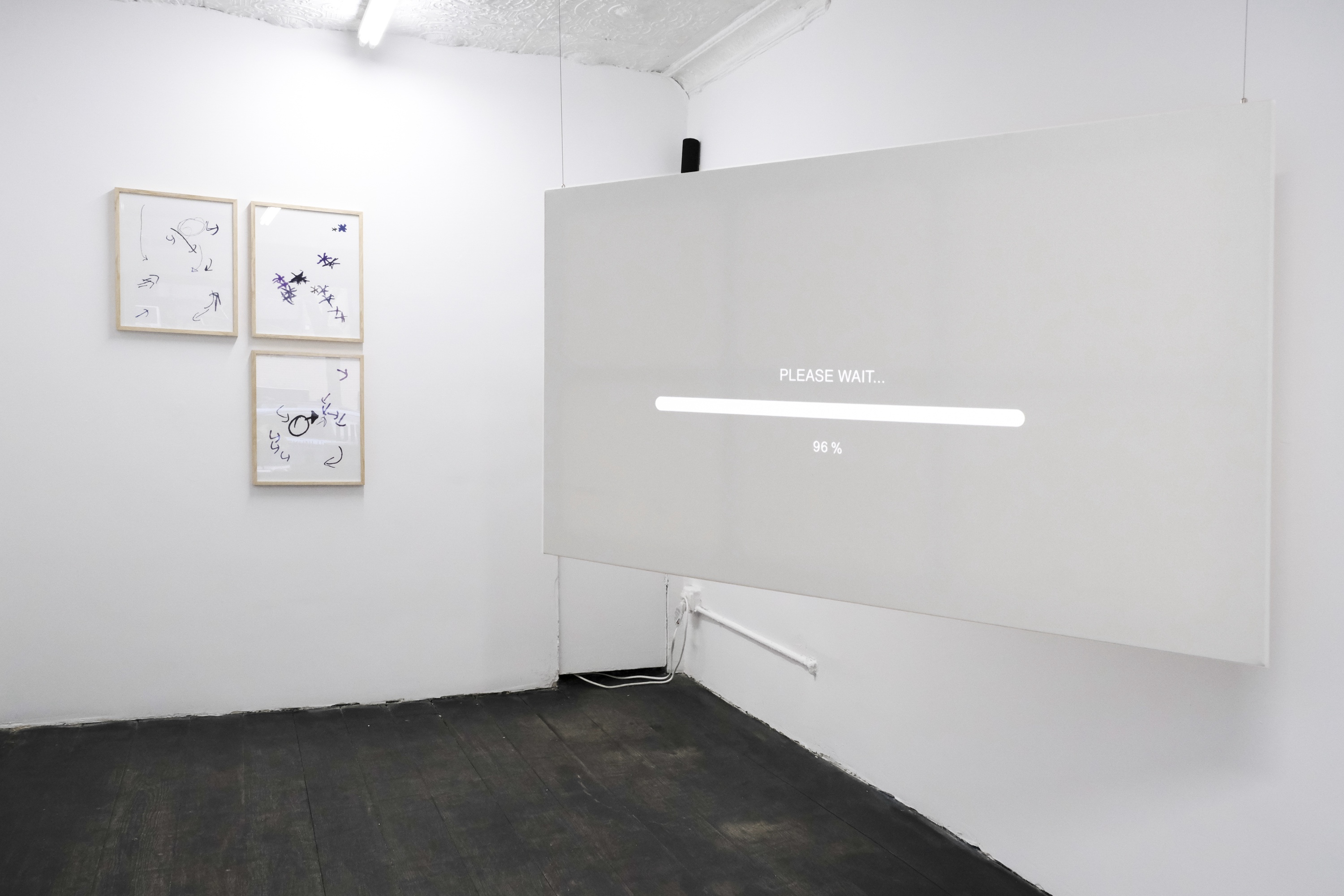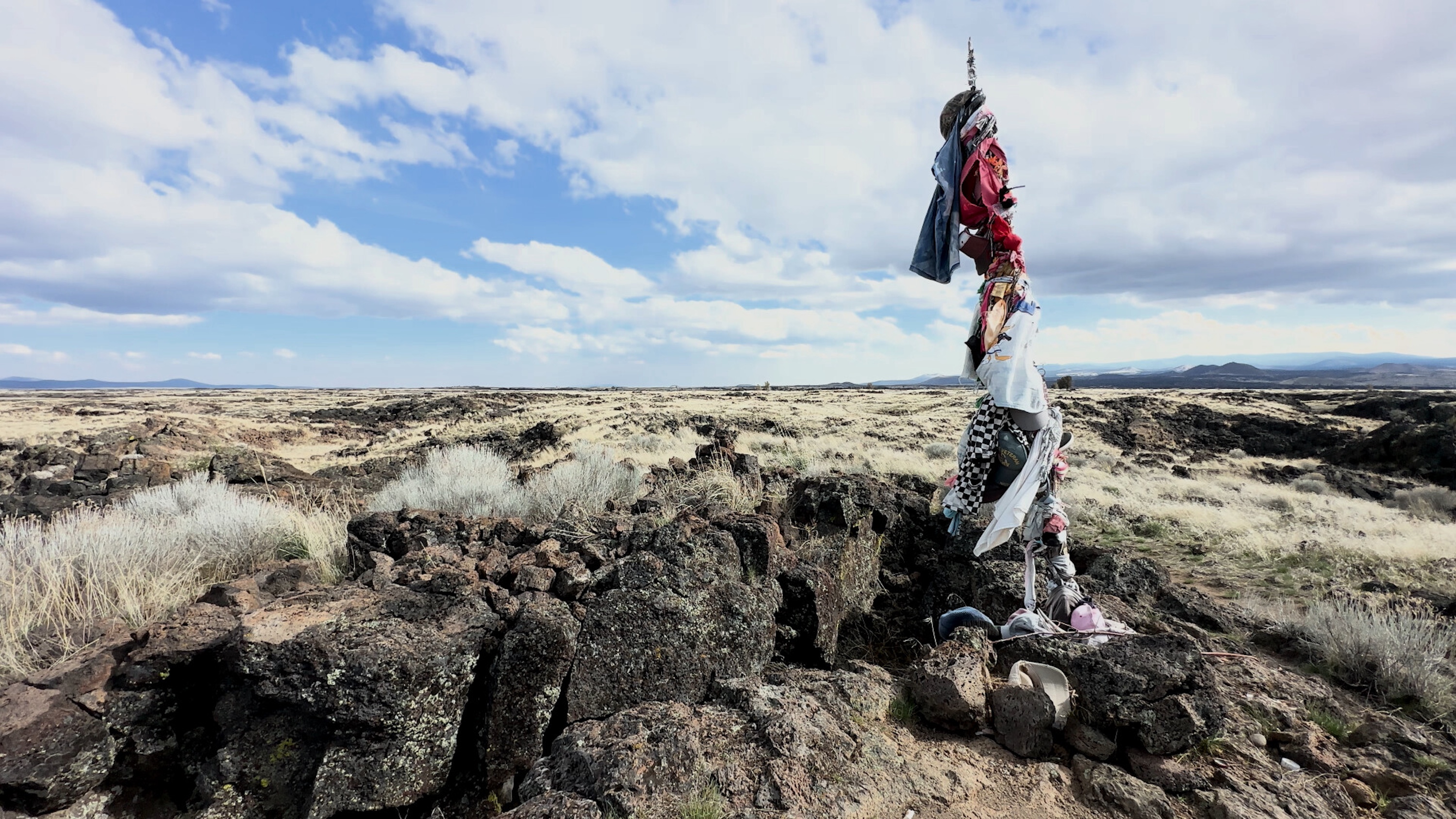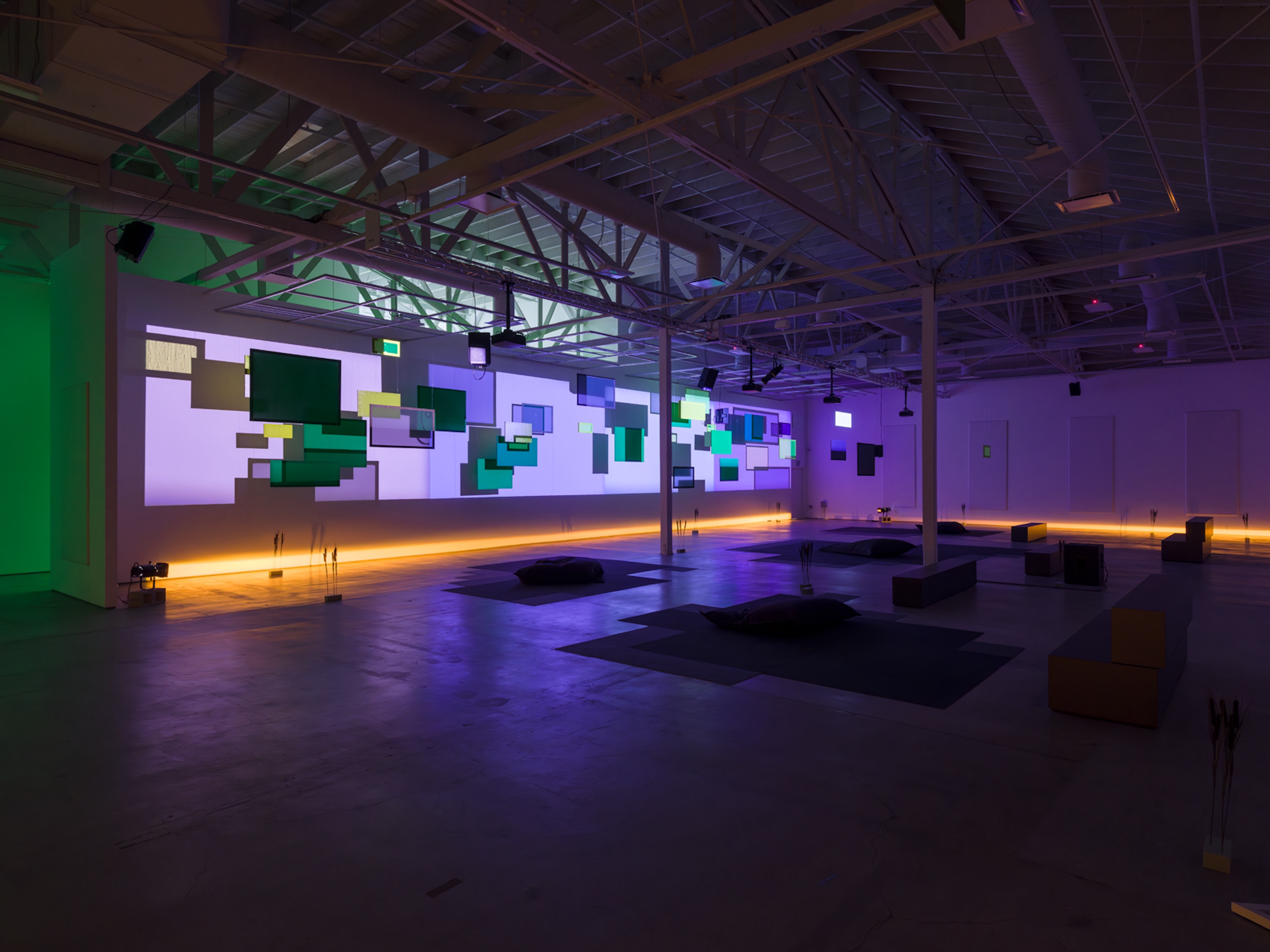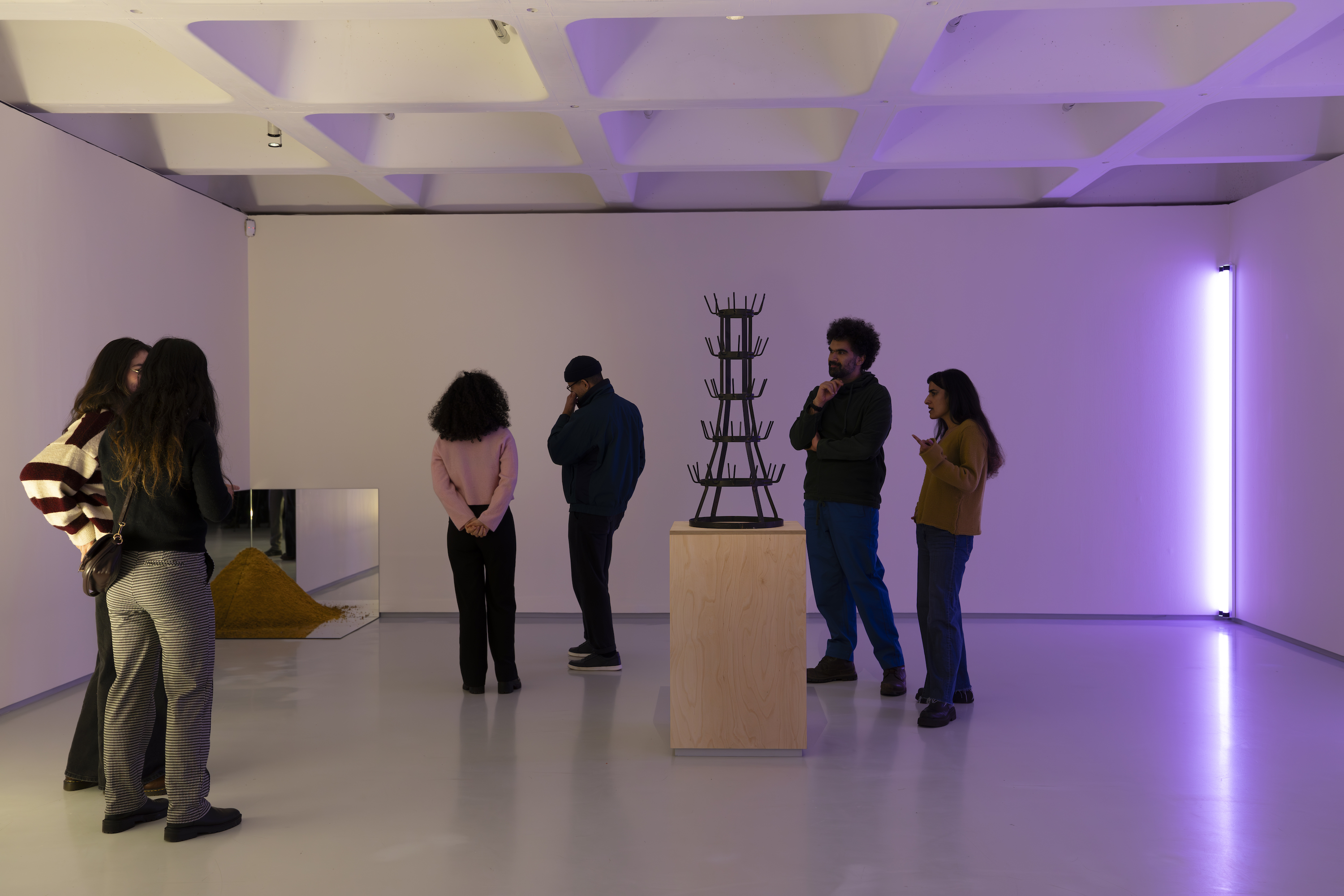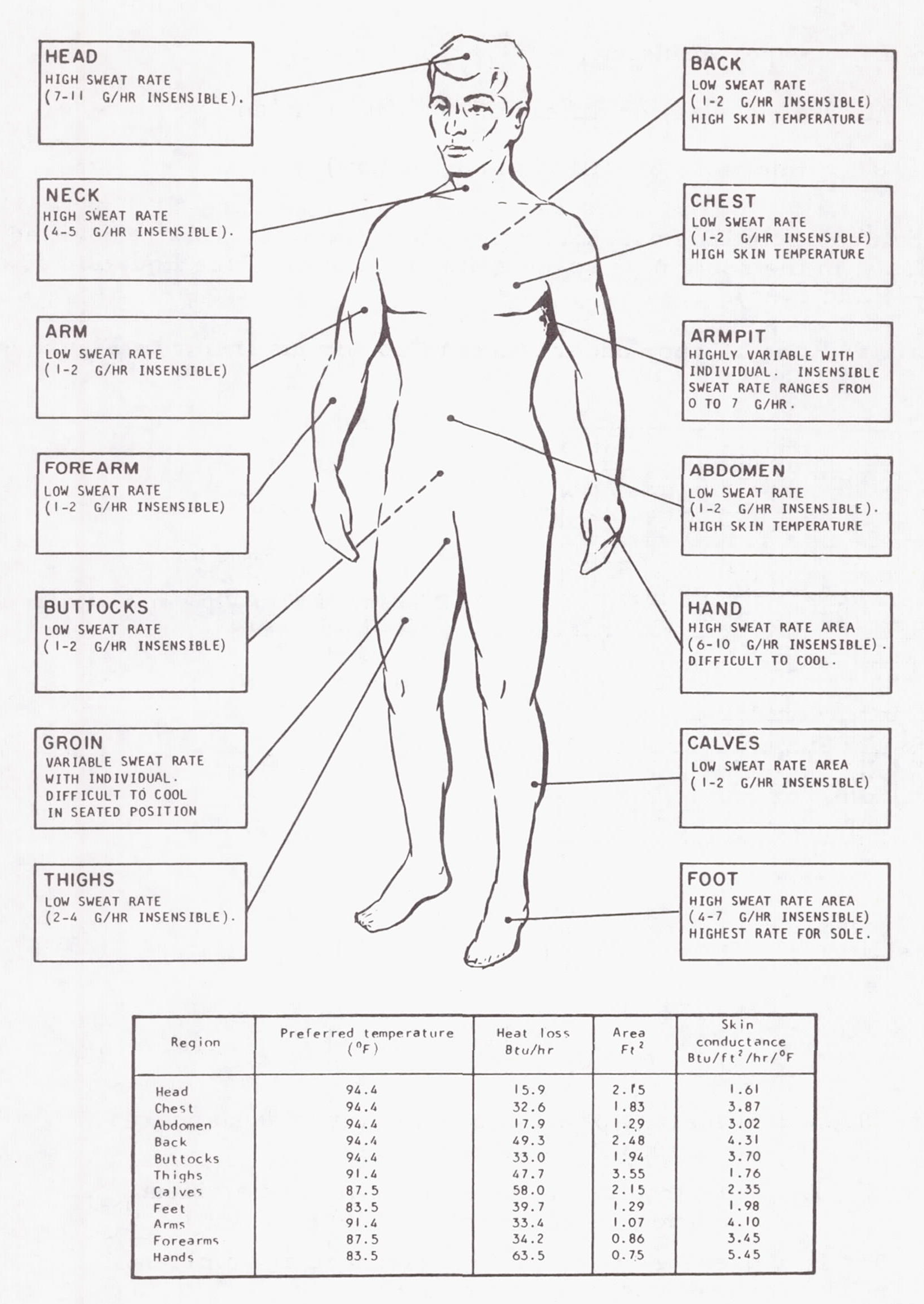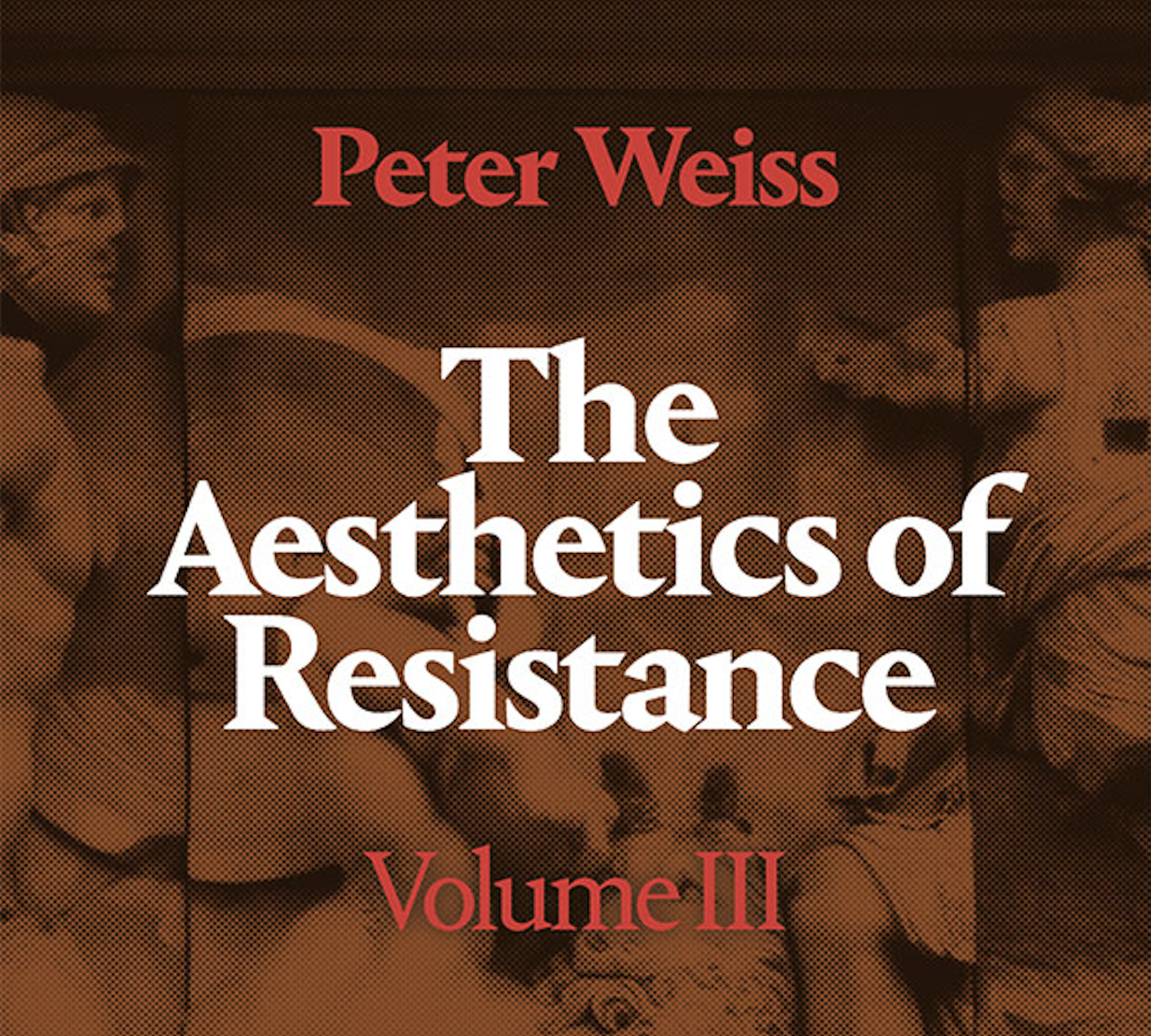April 19–May 18, 2024
Moyra Davey’s latest film, Forks & Spoons (2024), studies the work of five photographers: Francesca Woodman, Carla Williams, Alix Cléo Roubaud, Justine Kurland, and Shala Miller. In her characteristic, essayistic style, Davey weaves together footage of herself pacing between moss-covered tree trunks to a voiceover narration that contextualizes the work of each artist within their respective biographies. Reprising a handful of motifs—close-ups of dog-eared book pages, sunlit corners, long shots of her hands methodically turning through photobooks, and other symbols of the daily and domestic—the film is screened alongside a curated selection of prints and photo books by each artist, so that it functions as a kind of coda for the wider exhibition. Though Davey maintains a porous boundary between cinematic and physical space, she accentuates the varying capacities of moving, still, and published images throughout the show, highlighting how each of these forms carries and conveys distinct meanings. Davey’s subject never shifts, but by translating it across forms, she successfully presents something closer to its totality.
Davey’s primary interest here is in many ways a style. Each of her chosen image-makers was or remains attuned to a particular pitch of self-capture: a feminized portraiture of long exposures, blurred movement, acute desire, and, most especially, the itch and frenzy of moving between the public and the private. Francesca Woodman’s images of her solitary, nude silhouette, backlit against large over-bright windows, hang with Justine Kurland’s photographs of entwined lovers and Carla Williams’s three-quarter length self-portraits, her hand clutching at her chin, her hair, the collar of her white striped robe. There is desperation in these images; the violence of need, and the existential shadow of insatiability. The camera captures bodies bleeding, pinched, and contorted; elsewhere, bodies are at peace, nude forms resting between tree branches.
In Alix Cléo Roubaud’s “Si quelque chose noir” (1980-81), she photographs herself across seventeen images, each made with multiple exposures so that even as her body appears supine on the tile floor, her corpse-like figure framed by rays of sunlight, she traipses around the sparsely furnished room in the other half of the image. Hung in a line, the works ooze narrative potential, and speak the same fundamental language as Woodman’s self-portrait crouched below a windowsill, her face partially obscured by a rectangle of wallpaper propped in place by a row of silver cutlery, a blurred fork held in her flattened palm. As tenacious as they are delicate, the images Davey selects conjure the spectral and the ghostly, even as the physical photographs remind us of their material objecthood. Doubly exposed negatives blooming out of carefully burnished prints, each image radiates with the tactility of manipulation and the confidence that comes with technical skill. These photographs are made, betraying allegiance to a form even as conceptually, they thrive on the oxymoronic, the not-quite, almost, and in-between.
Mounted behind glass or bare on the walls of the main gallery spaces, the photographs function as tangible citations to Davey’s already thoroughly annotated film. These images are her primary sources, and like quotes peppered through a paragraph, they offer a glimpse of the spark that prompted Davey’s initial curiosity. Drawing connections between shared styles and interests, Davey remaps her train of thought in both the film and the gallery space through a process that is fundamentally kin to that of writing. But perhaps the most strikingly literary quality to Forks & Spoons is how it refuses the definitive and operates as a set of open-ended speculations. In the way of a well-constructed text, the exhibition informs so that it can ask better questions. Through her film, Davey catches us up to speed, rapidly bringing us along on her study of Woodman, Williams, Kurland, Miller, and Cléo Roubaud and encouraging us to see, in essence, what she sees: the generative dialogue between them, the similarities and differences in how each artist wields their camera. She then leaves the images bare, unadulterated and simply presented, so that they can speak for themselves. Against the pressure on works of art to explain themselves, or to symbolize an already formed argument, Davey’s considered, edited questioning, is refreshing: a vehicle for ideation that visualizes a thought-process, prioritizing the means over any end.
